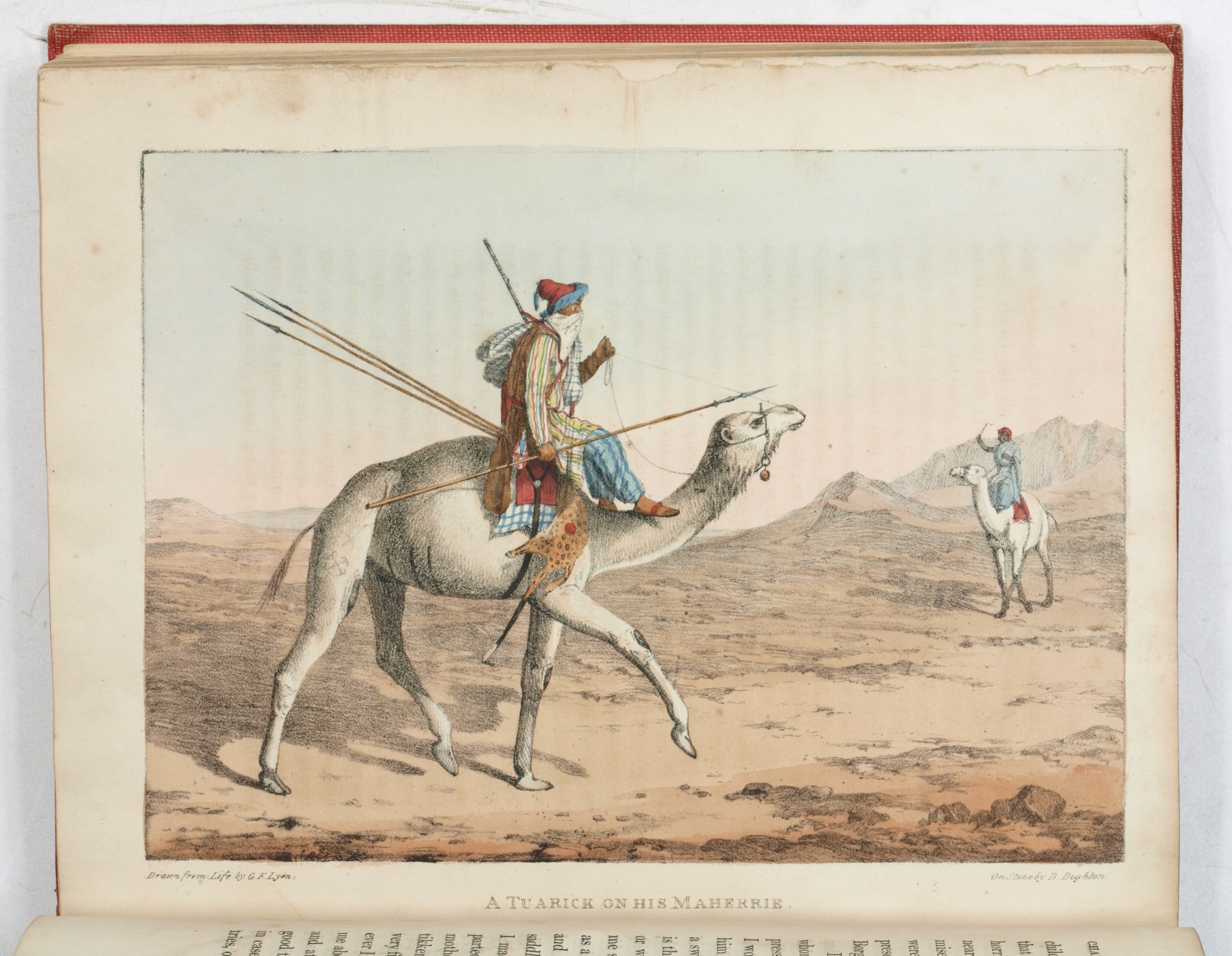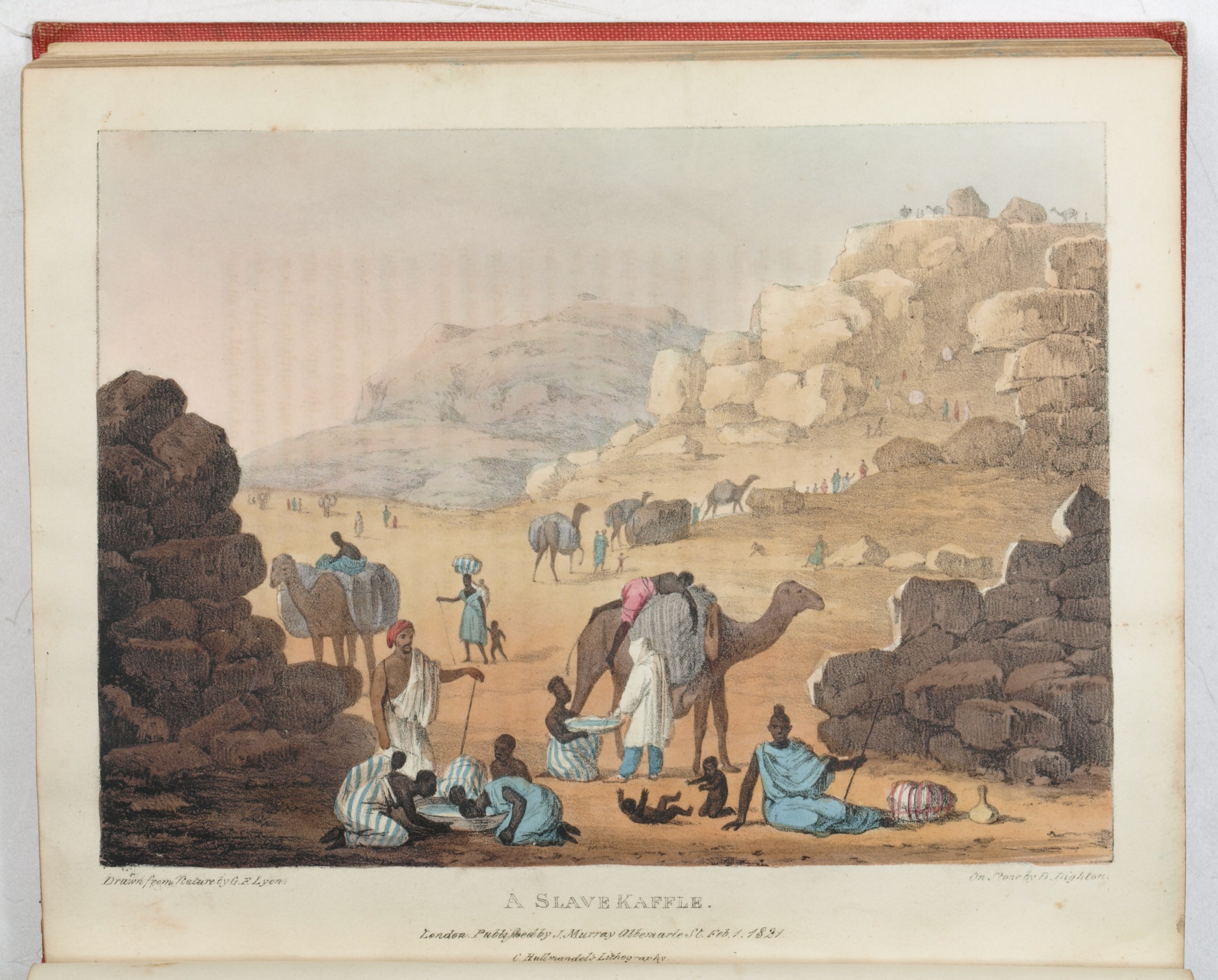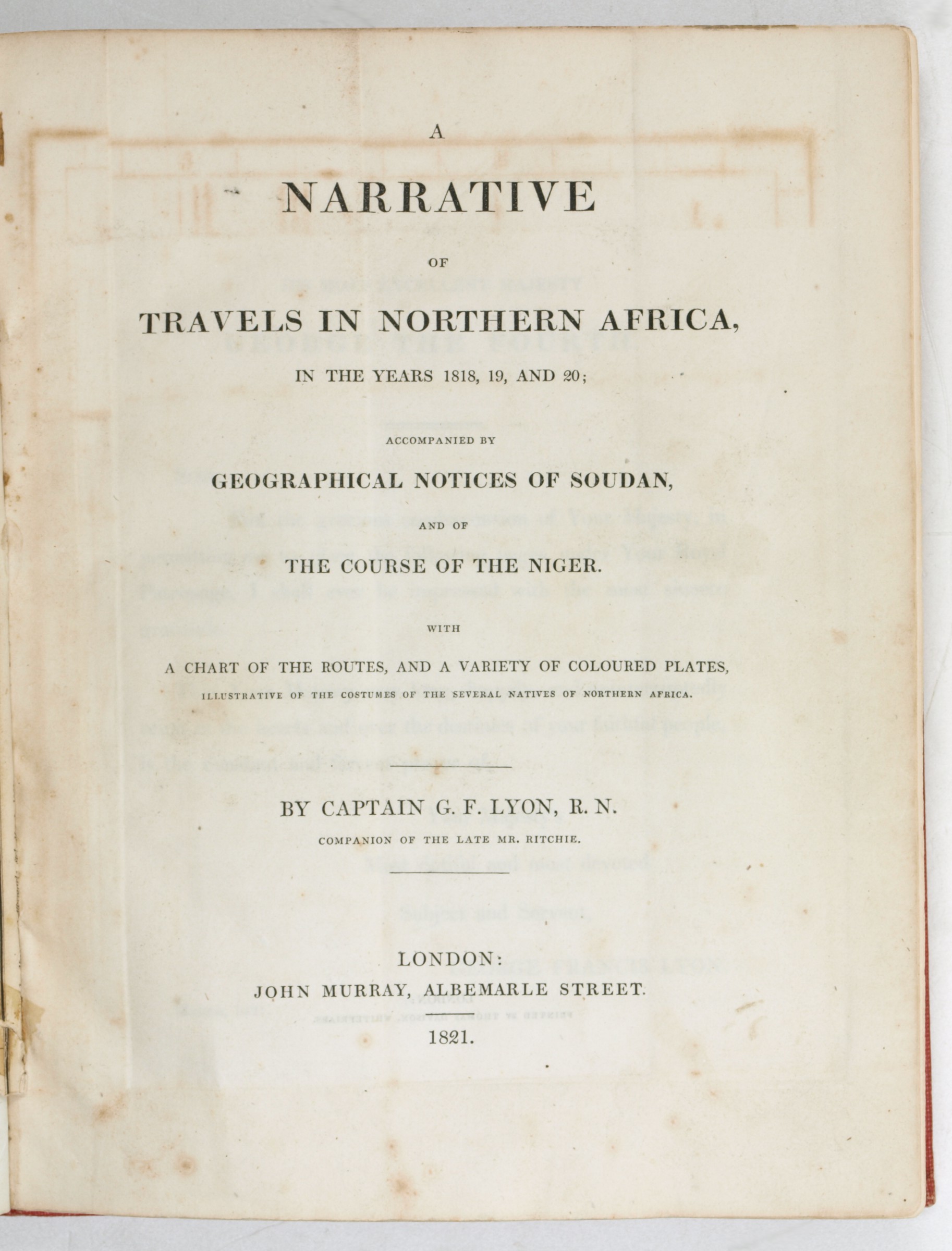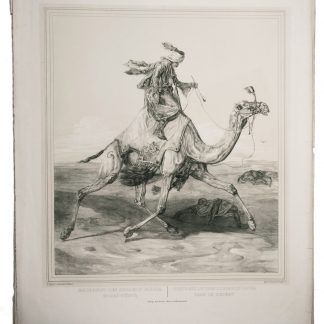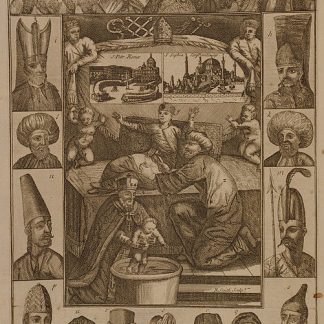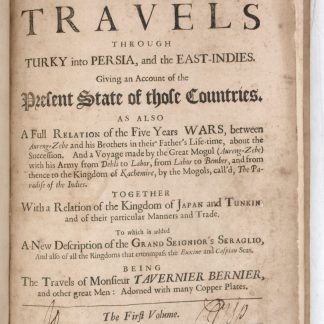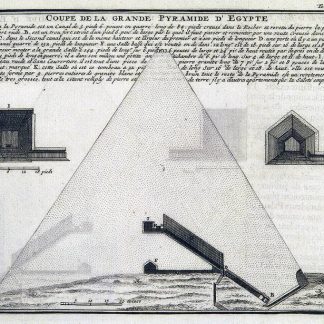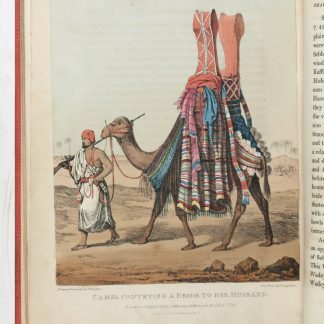A Narrative of Travels in Northern Africa, in the Years 1818, 19, and 20. Accompanied by Geographical Notices of Sudan, and of the Course of the Niger.
4to. XII, 383, (1) pp. Folding engr. map frontispiece ("Map of a Route through the Regency of Tripoli and Kingdom of Fezzan"), 17 chromolithogr. plates drawn by Lyon and lithographed on stone by G. Harley or D. Dighton, M. Gauci, as well as a text illustration. Modern red cloth with gilt-stamped black spine labels.
€ 4,500.00
First edition of Lyon's account of his botched Timbuktu expedition, finely illustrated with 17 plates (created by M. Gauci and D. Dighton after Lyon's own drawings) showing the Arabian desert culture.
In 1818, G. F. Lyon (1795-1832) was sent with surgeon-explorer Joseph Ritchie by Sir John Barrow to find the course of the Niger River and the location of Timbuktu. A year later they had only got as far as Murzouk where they both fell ill. Ritchie never recovered and died, but Lyon survived and continued his travels. After a year he returned to Tripoli, the expedition having failed utterly. Upon return, he was promoted and in 1821 - the same year this book was published - given the command of HMS Hecla on his second attempt. Lyon was reputed to have a genuine informed interest in the culture and inhabitants of the lands he visited. Wearing Arab/Muslim dress and speaking fluent Arabic, he managed to blend in with the inhabitants of North Africa. "An important work. Lyon joined the British government scientific mission headed by Ritchie, taking place of Captain Frederick Marryat. They met at Tripoli in November 1818. Ritchie died in 1819 and Lyon took over command of the expedition. He returned to London in July, 1820. Shortly after that he joined Parry's arctic expedition. The fine plates illustrate mostly costumes, and are all after drawings by Lyon" (Blackmer). Fergus Fleming characterizes the relationship between Ritchie and Lyon, who was a "moustachioed extrovert aged twenty-two [...] Lyon was not, on the face of it, suited to African exploration". By his own confession, his main interests were "balls, riding, dining & making a fool of myself".
The plates include: Costume of Tripoli (2 types), Triumphal Arch - Tripoli, Arabs Exercising, The Castle of Bonjem, A Sand Wind on the Desert, Piper and Dancer - Tripoli, The Castle of Morzouk, Tuarick in a Shirt of Leather & Tuarick of Aghades, Tuaricks of Ghraat, Costume of Soudan, Negresses of Soudan, Tibboo Woman in Full Dress, Tibboo of Gatrone, A Tuarick on his Maherrie, camel Conveying a Bride to her husband, A Slave Kaffle.
Offsetting on title from map; map tears repaired. Altogether in very good condition.
Blackmer 1044. Abbey Travel 304. Howgego II, L52 (p. 376). Henze III, 318. Lipperheide Ma 14 (note). Colas 1920. Hiler 556. Ibrahim-Hilmy I, 397. Lambert I, 147. Tooley 311. Fergus Fleming, Barrow's Boys: A Stirring Story of Daring, 2001, pp. 956. Brunet III, 1254. Graesse IV, 312.


